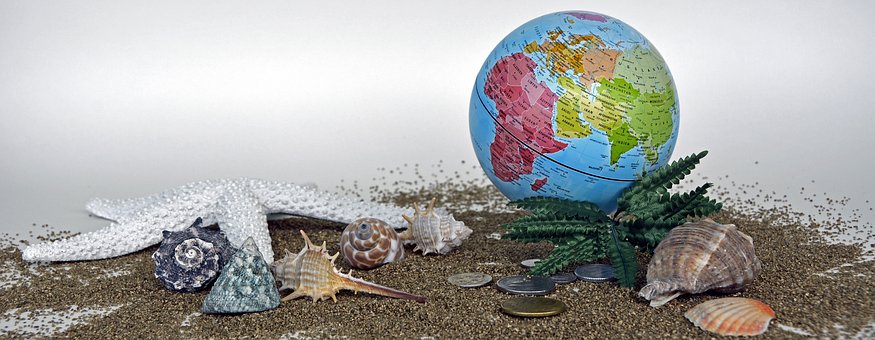Carbon Capture and Storage (CCS)
Mimicking Nature to Help Manage CO2 Emissions
Carbon capture and storage (CCS) includes the capture of carbon dioxide (CO2), transportation, and storage. The Global CCS Institute has been operating safely for 45 years. There are 194 large-scale facilities (2022) an increase from 51 in 2019. There are 80 facilities in the USA; the first was in Texas in 1972. Reducing emissions of carbon dioxide is a large part of the effort to battle global warming, and removing CO2 from the atmosphere will play an important role.
There are two processes to capture CO2: post-combustion capture and direct air capture.
 Post-combustion – captures emissions (flue gas) from smokestacks at coal or natural gas power plants or factories. This is the main method used in the USA. Once the flue gas is captured, the CO2 is separated. The most developed and most commercially available procedure uses amines (chemical substance) to extract the CO2 from the flue gas. Amines bind to CO2 at low temperatures, releasing it when heated to yield nearly pure CO2.
Post-combustion – captures emissions (flue gas) from smokestacks at coal or natural gas power plants or factories. This is the main method used in the USA. Once the flue gas is captured, the CO2 is separated. The most developed and most commercially available procedure uses amines (chemical substance) to extract the CO2 from the flue gas. Amines bind to CO2 at low temperatures, releasing it when heated to yield nearly pure CO2.- Direct air capture – is like an air filter, but expensive as it uses too much energy in relation to the volume it can capture. This may work best when used with sources of high concentrations of CO2 like ethanol plants.
Carbon Capture, Utilization and Storage (CCUS) converts captured carbon for reuse in industrial processes. After capturing carbon, it is pressurized into a liquid. Carbon Sequestration (storage) stores it in a carbon pool. Pipelines to storage locations are one method of transporting the liquid. Trucks are another. However, in general transportation is a major concern. The primary reason for transportation concerns is leakage. Although relatively few accidents are recorded, even a small percentage – 7% to 10% - exposed to ambient air poses as an immediate threat to human life. Also, storage concerns over leaks and the negative effect of NIMBY (not in my back yard) is stronger than any positive perception of CCUS.
The Biden administration awarded $251 million for carbon capture and storage projects in 7 states. Funding is provided through the U.S. Dept. of Energy, partly sourced from a portion of the $12 billion Infrastructure Law for carbon management projects. This is of major importance because one of the critical issues of carbon capture is transportation, as noted above. Three studies for developing better transport options will receive approximately $9 million of the slated funds.
The transportation of CO2 is one area that currently stimies individual companies from investing in carbon capture capabilities at their facilities. If one of the three main components (capture, transport, storage) is complicated or lacking, the investment is not going to achieve the goal. With the availability of the funding to improve this issue, and with tax credits for investing in carbon capture, it is hoped that companies will be incentivized.
As mentioned, capturing carbon is not new. A 100+ year old Norwegian chemical company serves the farming industry supplying fertilizers, or as they refer to it “crop nutrition”. They supply knowledge to help farmers improve crops through agronomy – the science of soil management and crop production. In 2021 they founded Agoro Carbon, an alliance of farmers, agronomists, and businesses. With their expertise, they encourage the advancement of nature’s process. Plant life takes in CO2 and Agoro enables farmers to sequester carbon in their soils to boost long-term soil health and yield potential. The program provides alternative income and other businesses can support monetarily in the climate change battle.
Universities are exploring a similar natural occurrence but at sea instead of on land. Natural ocean processes dissolves CO2 . When the amount of CO2 in the atmosphere accumulates at a rate faster than the ocean can process, ocean acidification occurs. This impacts marine life, such as corals and other organisms. Algae is a primary producer of organic matter. Sunlight converts algae into organic matter that becomes food for ocean life and for humans. If ocean acidification increases, the impact is not only at sea, but also on land. Ocean acidification kills sea life that forms a major part of the world food supply. Coastal economies rely on sea life to support their communities, and this extends beyond coastal areas. Restaurants across the nation – the globe – serve seafood. When demand is high and supply dwindles, we’ll all pay more for a nice meal.
 As the volume of CO2 increases, so will acidification. The natural process of dissolving CO2 in the ocean waters is a slow process that has been occuring since the beginning of time. This is known as weathering and one study simply wants to speed up the process to consume the excess CO2 more quickly in the atmosphere. This is called enhanced weathering. If compounds were added to the oceans to make them less acidic, more CO2 would be pulled out of the air. Initial research has shown compounds such as sodium bicarbonate or sodium carbonate to be effective. Additional studies continue testing effects on ocean life to ensure the process will be effective, not harmful, and not offset by reactions of the sea life. Note: there are other enhanced weathering studies for land and oceans.1
As the volume of CO2 increases, so will acidification. The natural process of dissolving CO2 in the ocean waters is a slow process that has been occuring since the beginning of time. This is known as weathering and one study simply wants to speed up the process to consume the excess CO2 more quickly in the atmosphere. This is called enhanced weathering. If compounds were added to the oceans to make them less acidic, more CO2 would be pulled out of the air. Initial research has shown compounds such as sodium bicarbonate or sodium carbonate to be effective. Additional studies continue testing effects on ocean life to ensure the process will be effective, not harmful, and not offset by reactions of the sea life. Note: there are other enhanced weathering studies for land and oceans.1
Proponents of carbon capture groups continue to develop technology saying it is crucial to the state of decarbonization, while opponents say it’s not fast enough. Slow technology development doesn’t fit with the critical stages of climate change. Opponents continue to press that these efforts simply delay investment in renewable energy such as solar and wind.
While we may have yet to develop a true circular process surrounding CO2 , we certainly seem to have a circular problem. Wind turbines seem like such an awesome idea. They are awesome. However, and here we go again, the blades contain plastic. More on this soon.

